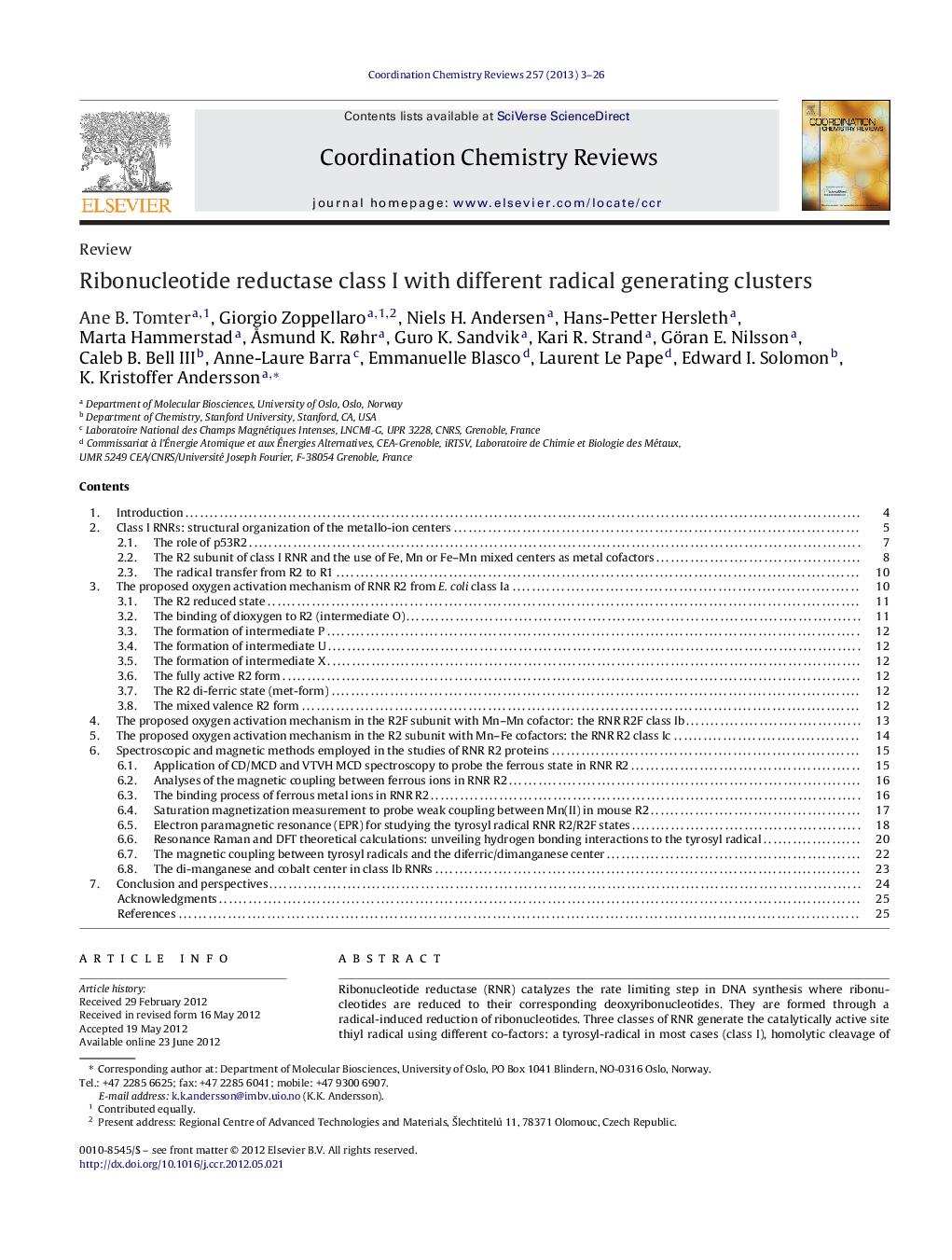| کد مقاله | کد نشریه | سال انتشار | مقاله انگلیسی | نسخه تمام متن |
|---|---|---|---|---|
| 1300094 | 974304 | 2013 | 24 صفحه PDF | دانلود رایگان |

Ribonucleotide reductase (RNR) catalyzes the rate limiting step in DNA synthesis where ribonucleotides are reduced to their corresponding deoxyribonucleotides. They are formed through a radical-induced reduction of ribonucleotides. Three classes of RNR generate the catalytically active site thiyl radical using different co-factors: a tyrosyl-radical in most cases (class I), homolytic cleavage of deoxyadenosyl-cobalamin (class II), or a glycyl-radical (class III), respectively. Class I RNR has a larger subunit R1/R1E containing the active site and a smaller subunit R2/R2F with (the thiyl-generating power from) a tyrosyl radical or an oxidized iron-manganese cluster and is reviewed herein. Class I is divided into subclasses, Ia (tyrosyl-radical and di-iron-oxygen cluster), Ib (tyrosyl-radical and di-manganese-oxygen cluster) and Ic (an iron-manganese cluster). Presented here is an overview of recent developments in the understanding of class I RNR: metal-ion cluster identities, novel 3D structures, magnetic-optical properties, and reaction mechanisms. It became clear in the last years that the primitive bacterial RNR sources can utilize different metal-ion clusters to fulfil function. Within class Ia that includes members from eukaryotes (mammalians, fish) and some viruses species, the presence of hydrogen bonding interactions from water at different distances with the tyrosyl-radical site can occur. This demonstrates a large versatility in the mechanism to form the thiyl radical.
Figure optionsDownload high-quality image (127 K)Download as PowerPoint slideHighlights
► Ribonucleotide reductase catalyzes a radical-induced reduction of ribonucleotides.
► Class Ia RNR R2 has a tyrosyl-radical and di-iron-oxygen clusters.
► Class Ib R2F has a tyrosyl-radical and di-manganese-oxygen/di-iron-oxygen cluster.
► Class Ic R2 has no tyrosyl-radical, but uses oxidized iron-manganese cluster.
► Presented here are novel 3D structures, magnetic-optical properties and mechanisms.
Journal: Coordination Chemistry Reviews - Volume 257, Issue 1, 1 January 2013, Pages 3–26